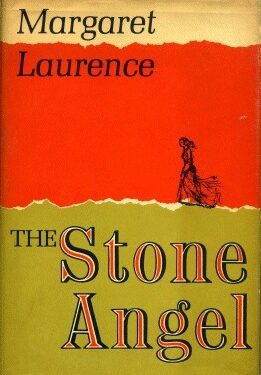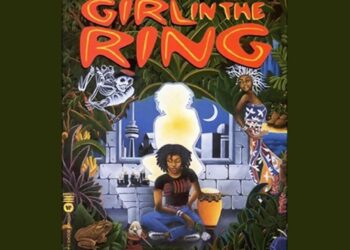What are the various functions in the novel The Stone Angel
In Margaret Laurence’s novel “The Stone Angel,” the stone angel statue serves as a multi-faceted symbol with various functions throughout the narrative. Situated in the cemetery, this stone angel symbolises a tangible and figurative presence in the life of the main character of the book, Hagar Shipley. As the narrative develops, its meaning changes to mirror Hagar’s feelings and experiences.
Symbol of Stubbornness and Resistance:
At first, Hagar’s obstinacy and refusal to change are represented by the stone angel. Despite her son Marvin’s misgivings, the ageing and fiercely independent protagonist Hagar insists on placing a stone angel on her family plot. Hagar’s unwavering character, her resolve to stand up for herself, and her defiance of her family’s wishes are all reflected in the angel.
Representation of Hagar’s Pride and Stoicism:
The stone angel also represents Hagar’s pride and stoicism. Just as the angel stands tall and unyielding in the face of the elements, so does Hagar in her old age. She refuses to show weakness or vulnerability, even when her health and circumstances deteriorate. The angel serves as a visual reminder of Hagar’s unyielding spirit and her determination to maintain her dignity.
Foreshadowing of Mortality:
The stone angel foreshadows Hagar’s mortality throughout the novel. The angel, situated in the cemetery, serves as a constant reminder of death and the passage of time. As Hagar reflects on her life, the stone angel looms in the background, hinting at the inevitability of her own death. Its presence underscores the novel’s exploration of aging, mortality, and the search for meaning in life.
Symbol of Lost Identity:
As the narrative unfolds, the stone angel takes on a deeper symbolic meaning as a representation of Hagar’s lost identity. Hagar feels trapped in her roles as a daughter, wife, and mother, and the stone angel becomes a reflection of her own sense of entrapment. The angel’s imposing posture and unchanging expression mirror Hagar’s perceived inability to break free from the societal and familial expectations that have defined her life.
Also Read-
Discuss the manner in which Bapsi Sidhwa presents the partition in Ice-Candy Man
Consider The Tree of Man by Patrick White as a pioneer novel
Who is the father of Sangam literature? History and Literature of Sangam Literature
Marker of Family History:
The stone angel serves as a marker of family history and legacy. It stands on the Shipley family plot, marking the graves of Hagar’s ancestors. As Hagar reflects on her family’s history and her own place within it, the stone angel becomes a symbol of the generations that have come before her. It represents the weight of tradition and the expectations of her forebears.
Reflection of Emotional Barriers:
The stone angel also reflects the emotional barriers that Hagar has built around herself. Just as the angel’s face remains frozen and unmoving, Hagar’s emotional expression is often restricted. She struggles to express her love and vulnerability, and the stone angel becomes a symbol of the emotional stagnation that plagues her relationships, particularly with her son Marvin.
Contrast with Brampton’s Cemetery Angel:
The stone angel in the cemetery stands in contrast to the angel in the Brampton cemetery. The Brampton angel, representing life and rebirth, serves as a foil to Hagar’s stone angel. It highlights the novel’s thematic exploration of life, death, and the choices people make. Hagar’s stone angel represents resistance to change and the fear of embracing new experiences.
Catalyst for Hagar’s Self-Reflection:
As the novel progresses, the stone angel becomes a catalyst for Hagar’s self-reflection. It triggers memories of her past, including her strained relationship with her father, her loveless marriage to Bram Shipley, and the choices that shaped her life. The stone angel serves as a vehicle for Hagar to revisit her history and come to terms with her regrets and missed opportunities.
Symbol of Redemption:
In the novel’s climactic moment, Hagar finds herself trapped and helpless in a snowstorm. In her moment of desperation, she reaches out to the stone angel as a symbol of redemption and forgiveness. The angel’s face, which she previously perceived as cold and judgmental, now takes on a compassionate and forgiving expression. This transformation symbolizes Hagar’s own journey toward self-forgiveness and acceptance.
Representation of Closure and Peace:
Ultimately, the stone angel serves as a symbol of closure and peace. As Hagar confronts her own mortality and the memories of her past, she finds a sense of acceptance and resolution. The stone angel, which has been a source of conflict and reflection throughout the novel, comes to represent a source of peace and closure for Hagar as she approaches the end of her life.
In “The Stone Angel,” Margaret Laurence masterfully uses the stone angel statue as a multi-dimensional symbol that evolves throughout the narrative. It serves as a reflection of Hagar Shipley’s character, her pride and resistance, her sense of entrapment and emotional barriers, and her eventual path to self-acceptance and closure. The stone angel’s transformation and changing significance parallel Hagar’s own journey, making it a central and powerful element in the novel.
Conclusion
In Margaret Laurence’s novel “The Stone Angel,” the stone angel serves as a multifaceted symbol with various functions that contribute to the story’s themes, character development, and overall narrative depth. It represents not only a physical object but also a metaphorical presence in the life of Hagar Shipley, the novel’s complex and compelling protagonist.
The stone angel initially symbolizes Hagar’s stubbornness and resistance to change. It reflects her unyielding nature and her determination to assert her will despite the objections of her family. Over the course of the novel, its significance evolves, encompassing a range of functions:
First and foremost, the stone angel embodies Hagar’s pride and stoicism. It stands as a visual representation of her fierce independence and her resolve to maintain her dignity in the face of aging and adversity. This symbolizes her unyielding spirit and determination.
Throughout the story, the angel also acts as a foreshadowing of death. It continuously serves as a reminder of time passing and death’s inevitable nature to both Hagar and the reader because it is situated in a cemetery. This feature of the stone angel emphasises how age, mortality, and the search for purpose in life are all explored in the book.
The stone angel also represents Hagar’s identity loss. It starts to represent her feeling of being stuck in familial and societal responsibilities and her perception of not being able to escape the expectations that have shaped her existence.
The angel’s presence on the Shipley family plot also marks a connection to family history and legacy. It stands as a marker of the graves of Hagar’s ancestors, emphasizing the weight of tradition and the expectations that have been passed down through the generations.
Moreover, the stone angel reflects the emotional barriers Hagar has erected around herself. Its unmoving face parallels Hagar’s emotional stagnation, her struggle to express love and vulnerability, and the strained relationships, particularly with her son Marvin.
A significant function of the stone angel is its contrast with the angel in the Brampton cemetery, which represents life and rebirth. This contrast highlights the novel’s thematic exploration of life, death, and the choices people make. Hagar’s stone angel embodies resistance to change and fear of embracing new experiences.
Furthermore, the stone angel serves as a catalyst for Hagar’s self-reflection. It triggers memories of her past, including her complex relationship with her father, her loveless marriage to Bram Shipley, and the choices that have shaped her life. Through these reflections, the stone angel becomes a vehicle for Hagar to revisit her history and confront her regrets and missed opportunities.
In the novel’s climactic moment, the stone angel symbolizes redemption and forgiveness. As Hagar reaches out to it in a moment of desperation during a snowstorm, the angel’s expression transforms from cold and judgmental to compassionate and forgiving. This transformation represents Hagar’s own journey toward self-forgiveness and acceptance.
Ultimately, the stone angel represents closure and peace. As Hagar comes to terms with her own mortality and the memories of her past, she finds a sense of acceptance and resolution. The stone angel, which has been a source of conflict and reflection throughout the novel, becomes a source of peace and closure as Hagar approaches the end of her life.
In “The Stone Angel,” the stone angel symbolizes not only the protagonist’s character but also the novel’s overarching themes of aging, mortality, family, and the quest for identity and self-acceptance. Margaret Laurence’s use of this multifaceted symbol enriches the narrative, offering layers of meaning and complexity, and ultimately, it becomes an integral part of the novel’s profound exploration of the human experience.
FAQ.
Q1: What is the stone angel in “The Stone Angel” and why is it significant in the story?
Ans: The stone angel is a statue located in the cemetery and serves as a symbol with various functions in the novel. It represents not only a physical object but also a metaphorical presence in the life of the protagonist, Hagar Shipley. Its significance evolves as the story progresses, contributing to the novel’s themes and character development.
Q2: How does the stone angel symbolize Hagar’s character and her personality traits?
Ans: The stone angel initially symbolizes Hagar’s stubbornness, resistance to change, and unyielding nature. It reflects her determination to assert her will and her fierce independence. As the story unfolds, it continues to mirror her character, representing her pride, stoicism, and emotional barriers.
Q3: What thematic functions does the stone angel serve in the novel?
Ans: The stone angel is intricately tied to several central themes in the novel, including aging, mortality, family legacy, identity, and self-acceptance. Its presence and evolving significance contribute to the exploration of these themes and add depth to the narrative.
Q4: How does the stone angel foreshadow events in the novel?
Ans: The stone angel serves as a constant reminder of mortality and the passage of time because it is located in the cemetery. It foreshadows Hagar’s own mortality and her reflections on the inevitability of death, which are central elements in the novel.
Q5: What is the contrast between the stone angel and the angel in the Brampton cemetery?
Ans: The stone angel in the novel stands in contrast to the angel in the Brampton cemetery. The Brampton angel represents life and rebirth, while Hagar’s stone angel embodies resistance to change and fear of embracing new experiences. This contrast underscores the novel’s thematic exploration of life and death.
















